Suggestions for Estes Park filtered shade area?
mountain_rookie
15 years ago
Related Stories
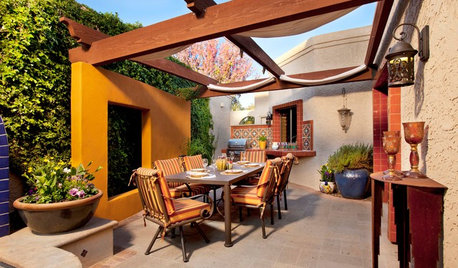
GARDENING AND LANDSCAPINGPatio Details: Sliding Fabric Panels Filter the Light Just Right
Stepping up to the harsh sun and heat of the desert Southwest, this intimate patio is an exotic escape right outside
Full Story
PATTERN12 Great Decorative Alternatives to Curtains
Filter light and views while drawing the eye by dressing windows in specialty glass, artistic screens or snazzy shades
Full Story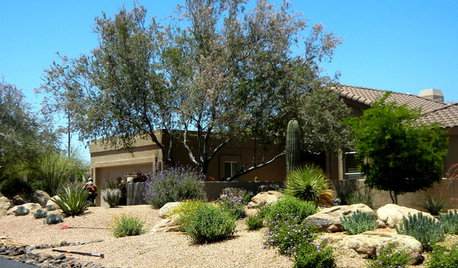
GARDENING GUIDESGreat Design Plant: Olneya Tesota Offers Desert Shade
This long-lived Southwestern native tree decorates the sky with its dusty gray-green foliage and lavender-colored blossoms
Full Story
FARM YOUR YARDHow to Farm Your Parking Strip
Get an up-close look at a thriving street-side edible garden, one of many sprouting up in Seattle
Full Story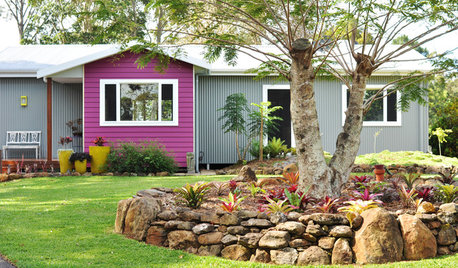
HOMES AROUND THE WORLDMy Houzz: Traveling Couple Find the Perfect Parking Spot
A dilapidated tin shed becomes the dream home of two nature-loving retirees and their many treasures
Full Story
WINDOWSTreatments for Large or Oddly Shaped Windows
Get the sun filtering and privacy you need even with those awkward windows, using panels, shutters, shades and more
Full Story
WINDOW TREATMENTSHow to Choose the Right Window Shades
Should you roll with rollers or do as the Romans do? This mini guide to choosing window shades can help
Full Story
LANDSCAPE DESIGNFind Yourself in an Epic Garden in the Shade
Feeling hot and tired gardening in the sun? The world of shade gardening beckons you to its cool mystery
Full Story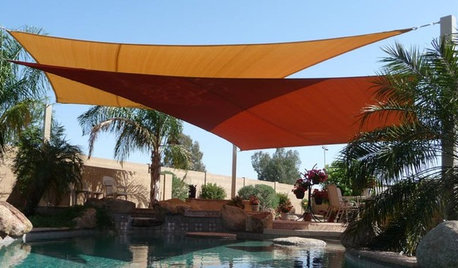
GARDENING AND LANDSCAPINGShade Sails: Outdoor Rooms Take Wing
Futuristic looking yet a terrific complement to both traditional and modern landscapes, shade sails lend a sculptural quality to patios
Full Story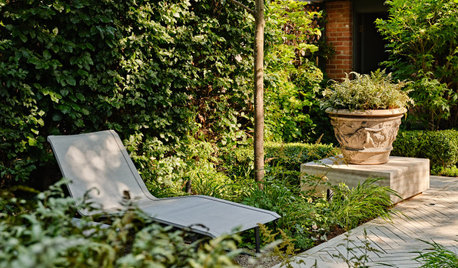
LANDSCAPE DESIGNHow to Create a Beautiful Shade Garden
Turn the cool, shady spot in your garden into your own quiet oasis
Full Story





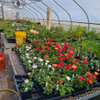
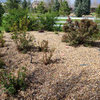
nancy_in_co
mountain_rookieOriginal Author
Related Professionals
Comstock Park Landscape Architects & Landscape Designers · Benbrook Landscape Architects & Landscape Designers · Havre de Grace Landscape Architects & Landscape Designers · River Forest Landscape Architects & Landscape Designers · Walnut Landscape Architects & Landscape Designers · Goodyear Landscape Contractors · Berwyn Landscape Contractors · Cambridge Landscape Contractors · Lake Zurich Landscape Contractors · Miller Place Landscape Contractors · Nutley Landscape Contractors · Ponte Vedra Beach Landscape Contractors · Tuscaloosa Landscape Contractors · Yuba City Landscape Contractors · Muscatine Solar Energy Systemsnancy_in_co
Skybird - z5, Denver, Colorado
mountain_rookieOriginal Author
nancy_in_co
Skybird - z5, Denver, Colorado
mountain_rookieOriginal Author
Marie23
ecofloral
mountain_rookieOriginal Author
nancy_in_co
Skybird - z5, Denver, Colorado
mountain_rookieOriginal Author
Skybird - z5, Denver, Colorado
mountain_rookieOriginal Author
nancy_in_co
Skybird - z5, Denver, Colorado
mountain_rookieOriginal Author
jnfr